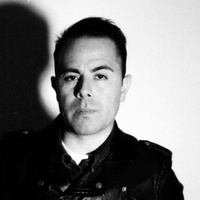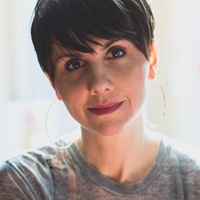On the compulsion to create
Prelude
Julie Doucet is a French-Canadian cartoonist and artist, best known for her autobiographical works such as Dirty Plotte and My New York Diary. Her work is concerned with such topics as “sex, violence, menstruation, and male/female issues.” In 2018 Drawn and Quarterly published Dirty Plotte: The Complete Julie Doucet, a two-book box set that collects the entire Dirty Plotte comic book series, including the acclaimed My New York Diary, as well as rare comics and previously unpublished material. Her deeply influential stories are candid, funny, and intimate, plumbing the depths of the female psyche while charting the fragility of the men around her. Doucet was active in comics for 15 years before she moved on to other mediums, and her influence is still palpable in comics today.
Conversation
On the compulsion to create
Cartoonist and artist Julie Doucet on working in different forms, the limits of autobiography, and looking back at old work for the first time.
As told to Jessica Hopper, 1507 words.
Tags: Comics, Art, Inspiration, Creative anxiety, Time management.
How does it feel to have all of your comic work together in one place and to look back at it?
It feels like I’m old. And I’m at that point in life where people put up your whole work in big books but it’s nice, I quite like the idea of big books like that.
Before this, were you ever very retrospective about your comic work in particular?
Not really. I never re-read myself and comics in general. I mean, I drew comics for 12 years, and it’s been almost 20 years, so this was the first time.
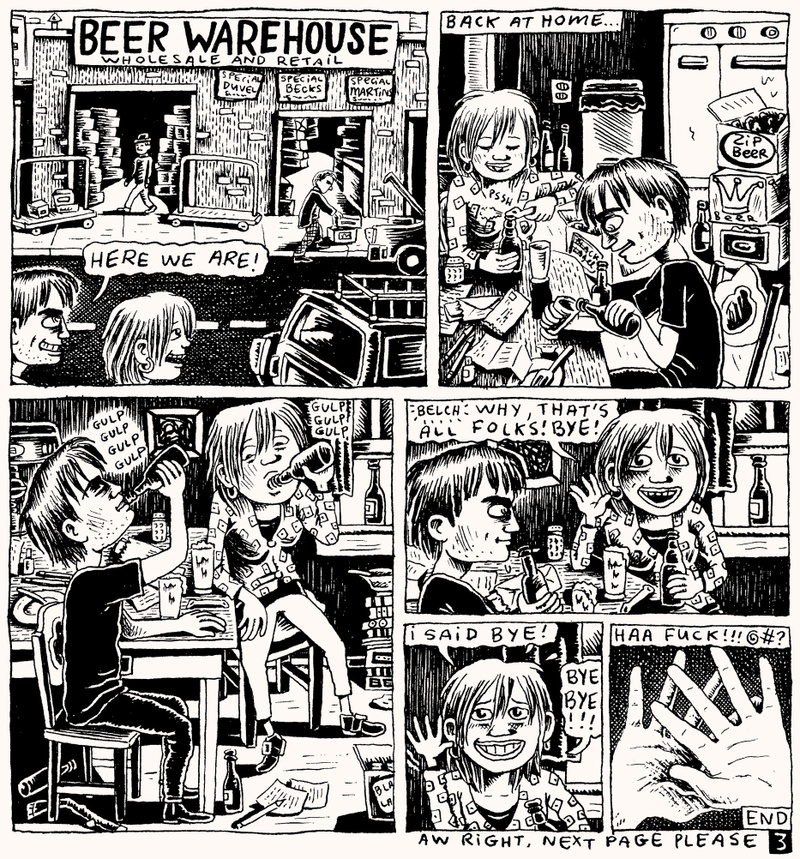
How did it feel for you to look back and re-meet or become acquainted again with yourself as a young artist?
It was interesting to re-read my old diaries from that era. That was quite special, and was about really revisiting the person I was back then. It was a surprise. I would describe whatever happened in the day and whoever I’d met. Reading all about that, and the way people acted with me, made me realize who I was, in a way, and how people looked at me. I had the impression that I was a very lonely person, but not really—there were always people just dropping by my place and hanging out.
What parts of yourself that show up in the comics are still part of you as an artist, decades later?
The person I am in the comics is not really the person I am in real life, but I show one or two aspects of myself. In that way, it’s sort of a lie by omission, so it’s not really me.
But when you look back at yourself as an artist at that time, what do you think remains true?
The compulsion of having to draw art, and of having to do something creative. I tried to stop a couple of years ago, when it just didn’t make sense to me anymore. But I just couldn’t. I stopped for 24 hours and I couldn’t stand it, I just had to draw something.
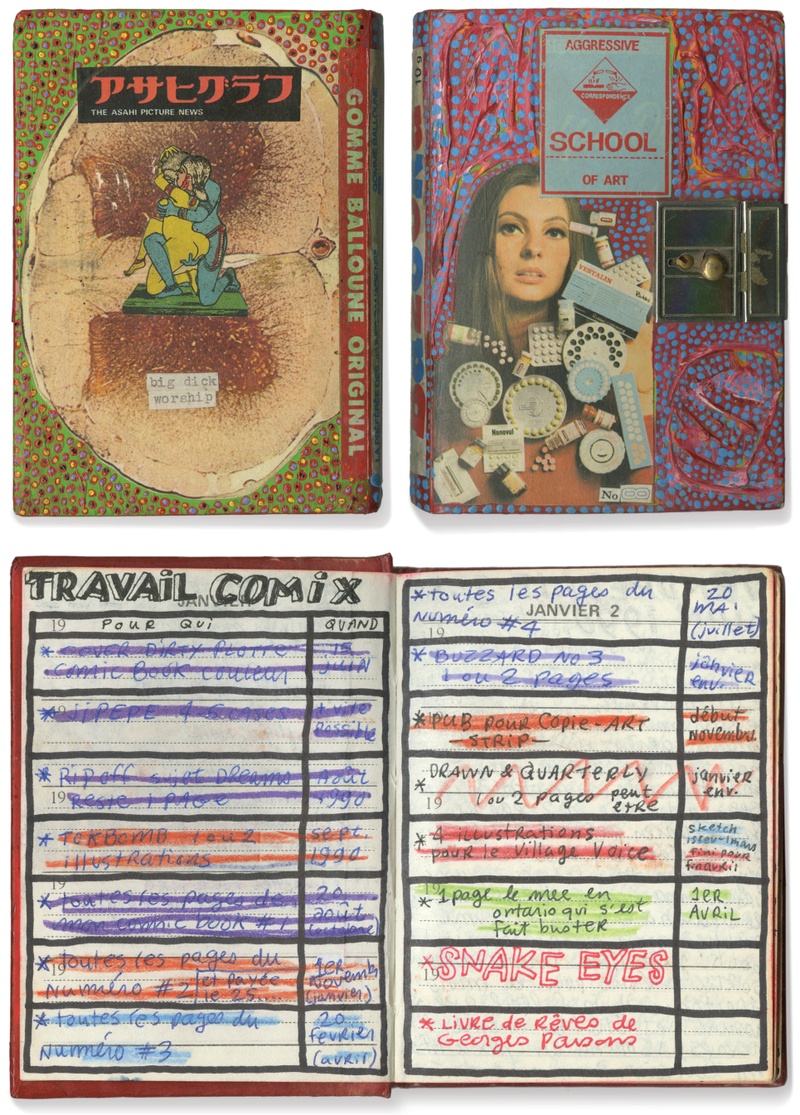
What do you think that drive or compulsion to keep making work is about?
I really can’t explain it. It’s mysterious. It just happens, I don’t know, I just can’t help it, I guess—maybe it’s a neurosis.
Can you talk about your process as an artist? Do you make work every day?
I have to start almost right away when I get up. I eat breakfast quickly and I make a pot of coffee, then I bring the coffee on the drawing table and I have to start right away. Otherwise I get distracted and then I’m in a lot of trouble to sit down and work, to actually do something creative. I work in the morning. I have to work that way, every day.
How many hours?
Three hours a day. I do creative things in the morning, and then later in the day I do things like setting paper, printing work, putting together books, or things where I don’t really have to use my brain.
Why do you think collage has been meaningful for you?
It’s something that I always loved from the start, from when I was an art student. And when I started to draw comics I just didn’t have any time anymore to do anything like that. What I really like about it is that it forces you to look into something different. Maybe not in comics, but later I wrote poetry with cut-out words, and then started another project using the leftover words from the portrait work.
How important are constraints for you?
Very important. It triggers everything. I did quite a lot of the writing work with cut-out words, but it became too easy to do, too much of a recipe. So I had to stop that and start something else with another—well maybe not constraint—but to start over from nothing. Just to keep myself interested. If the drawing comes up again it would be unthinkable for me to do it the way I used to do it. It would have to be radically different.
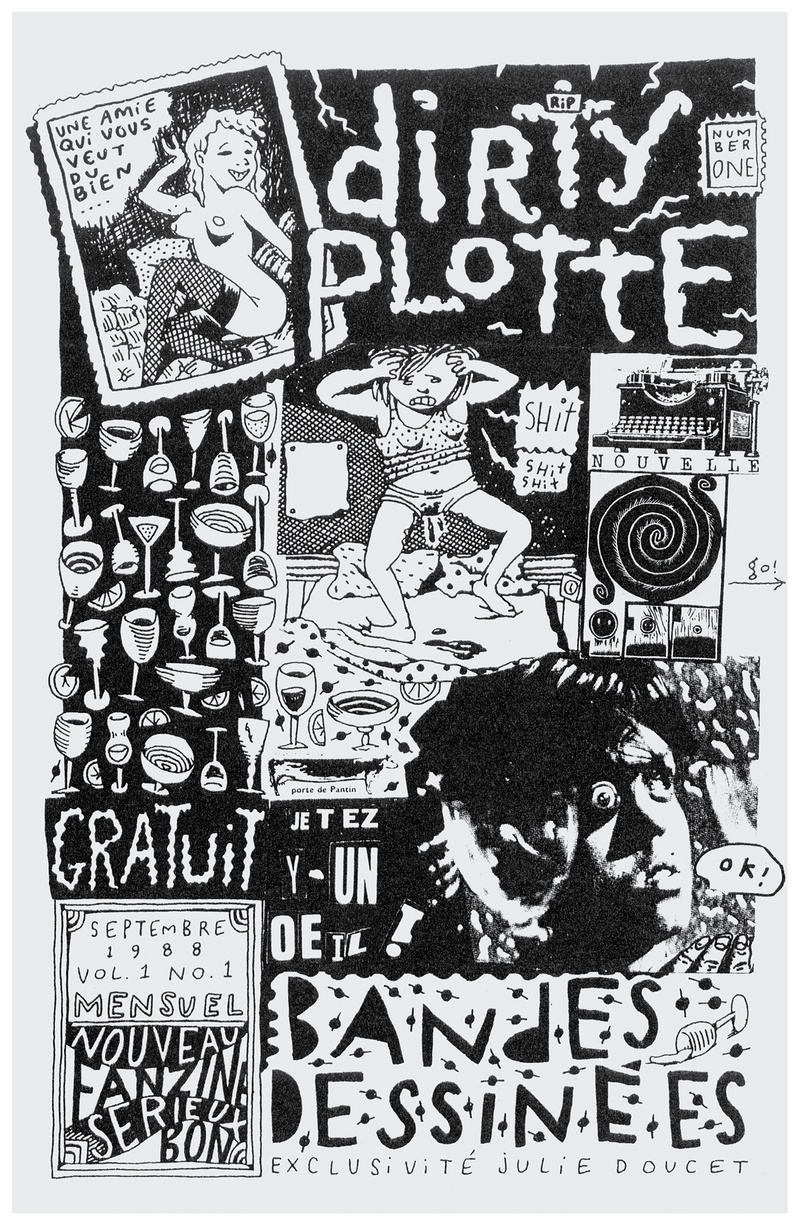
Is starting all over again part of the appeal of switching? Is that why you want to switch between things?
It’s more the fear of repeating myself. Maybe I could have kept on drawing comics about having my period, and so many people would have been so happy about that, but to me it would be awful in the sense that it is a repetition and a recipe. It would be very convenient, but no, I would die doing that.
When you were a younger artist, just starting to make art on an everyday basis, what was most important to you to say to the world? What were you trying to convey?
I wasn’t trying to say anything special. There was absolutely no way to show anything at that point. I mean, there were no publishers around me, no nothing. As an artist, I’d be making my own fun dream a reality. That would be just about the furthest I thought I could go.
Can you talk about the work that you’re making now?
I’ve been making sculptures out of cardboard, it’s all geometric abstract and I cover them with prints that I made. It’s mostly only geometrical patterns, too, and that’s going to be a collaboration with a friend of mine who’s a sound artist who’s making structures that move and make sounds. So, it’s going to be a mixture of the two together.
After making work that was so personal with comics, do you feel liberated by making work that isn’t autobiographical in the same way?
Yeah, the difference is that I had quite enough of myself. Of course, it can be an infinite source of inspiration and stories, but then, once again, it gets old.
On the cover of the Dirty Plotte books, you have an illustration of people recognizing you and you’re saying, “What should I say?” Having done work that is so personal, sometimes people think that they know you because they know your work. Do you feel less interested in being known to people? Do you feel like you’ve become more private as you’ve matured as an artist?
No, I mean people feel or think that it’s very personal, but to me it’s not. I think it’s true for a lot of people who are working with autobiography: you work with one or two aspects of your life, and you leave out so much stuff. I do have my limits, so to me it’s not that personal. I never broke any of my rules doing that.
What are your rules as an artist, then or now?
I would never talk about my family, for one thing. They almost never appear in my comics. Never to use anybody I know or mostly just leave out the people I know. In the book 365 Days, I drew my friends. I was hanging out, I was working with the these two girlfriends of mine at the printing studio. When the book was published, I gave them each a copy of the book, but they didn’t want to read it. That was a bit of a shock for me, so I decided to never again use something like that, never use a friend or anybody around me.
You said that you feel this compulsion almost, to have to wake up and make art every day. What do you do to fuel that?
I tend to not go too often to exhibitions or buy art books or anything like that, because I usually get so discouraged when I see great things.
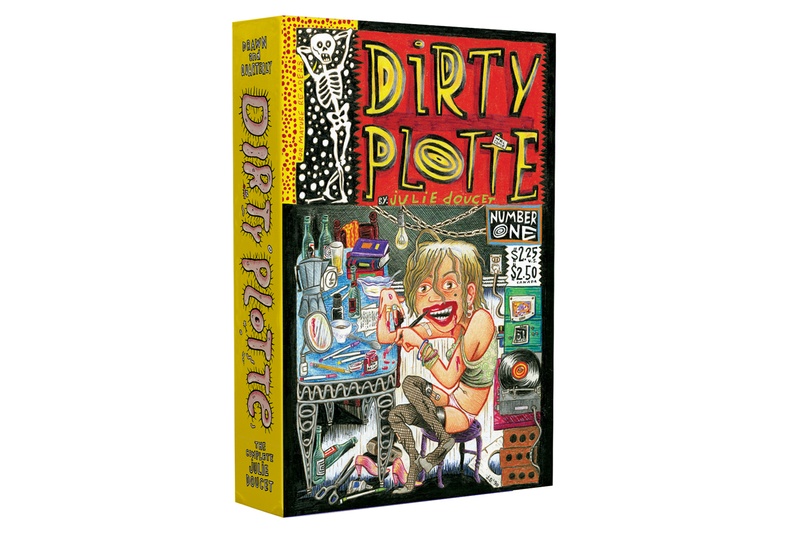
What do you mean by that?
What’s the use in working or creating things when there are such amazing things around already? And, of course, it seems like everything has been done 100 times, so that can be quite discouraging, too. I’m afraid it’s all about myself, too.
Can you explain that?
In the way… Oh, I can’t explain it. I mean, of course, you get inspiration from looking all around you. Anything can be inspiration. Somebody walking on the street. There are so many things to look at that can trigger ideas. With influences, it’s not really about one thing, it’s about one million things that surround you.
Julie Doucet recommends:
(in no particular order)
-
Geneviève Castrée’s comics and songs and poetry
-
Fruit Of Knowledge by Liv Strömquist
-
Manifesti Of Radical Literature by Anne- Elizabeth Moore
-
The Inconvenient Indian by Thomas King
-
Oramics (2 CDs collection) by Daphne Oram
- Name
- Julie Doucet
- Vocation
- Cartoonist, Artist
Some Things
Pagination
